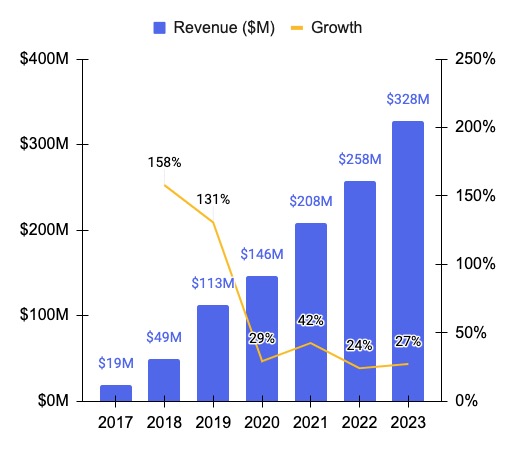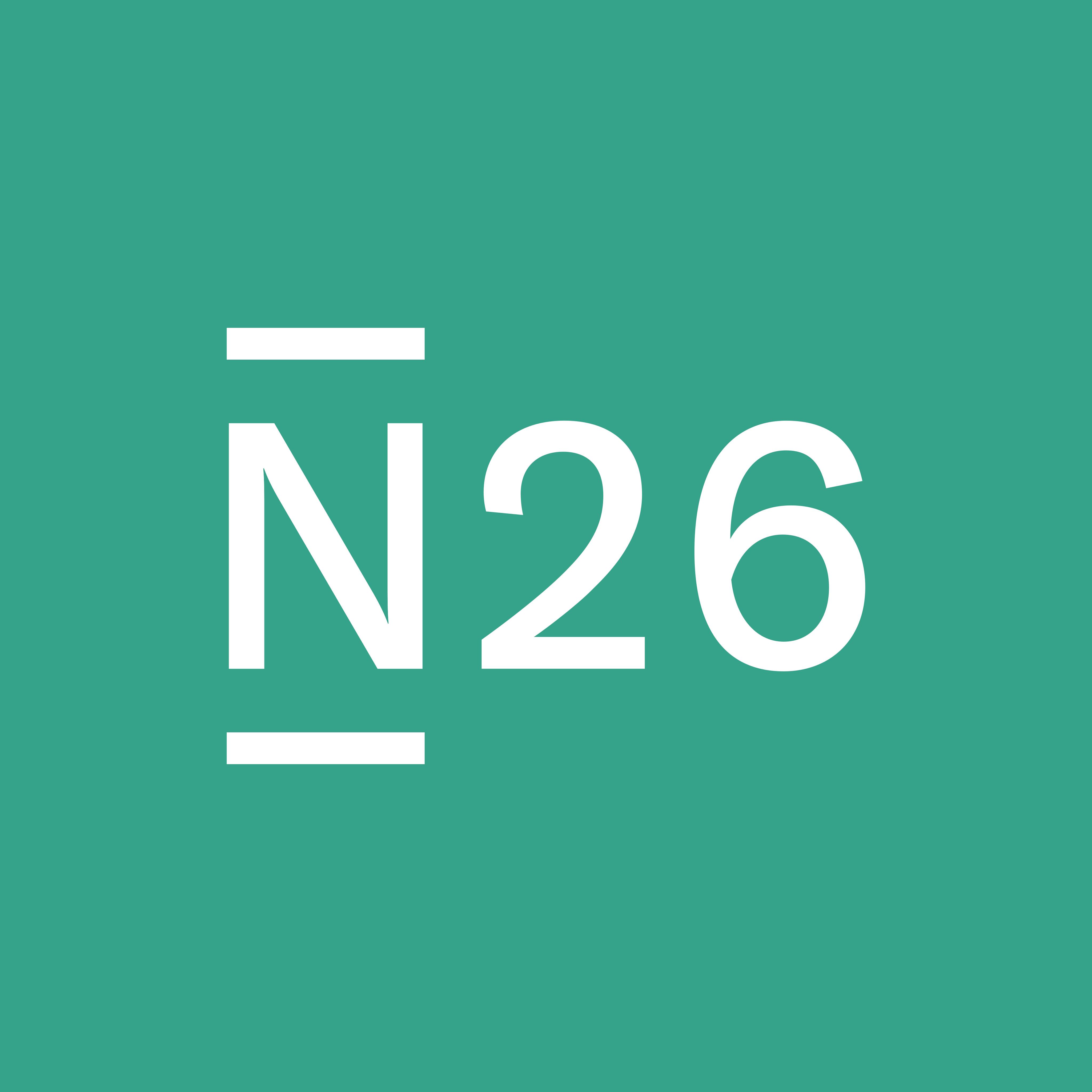
Revenue
$328.00M
2023
Valuation
$9.00B
2023
Growth Rate (y/y)
27%
2023
Funding
$1.70B
2023
Product
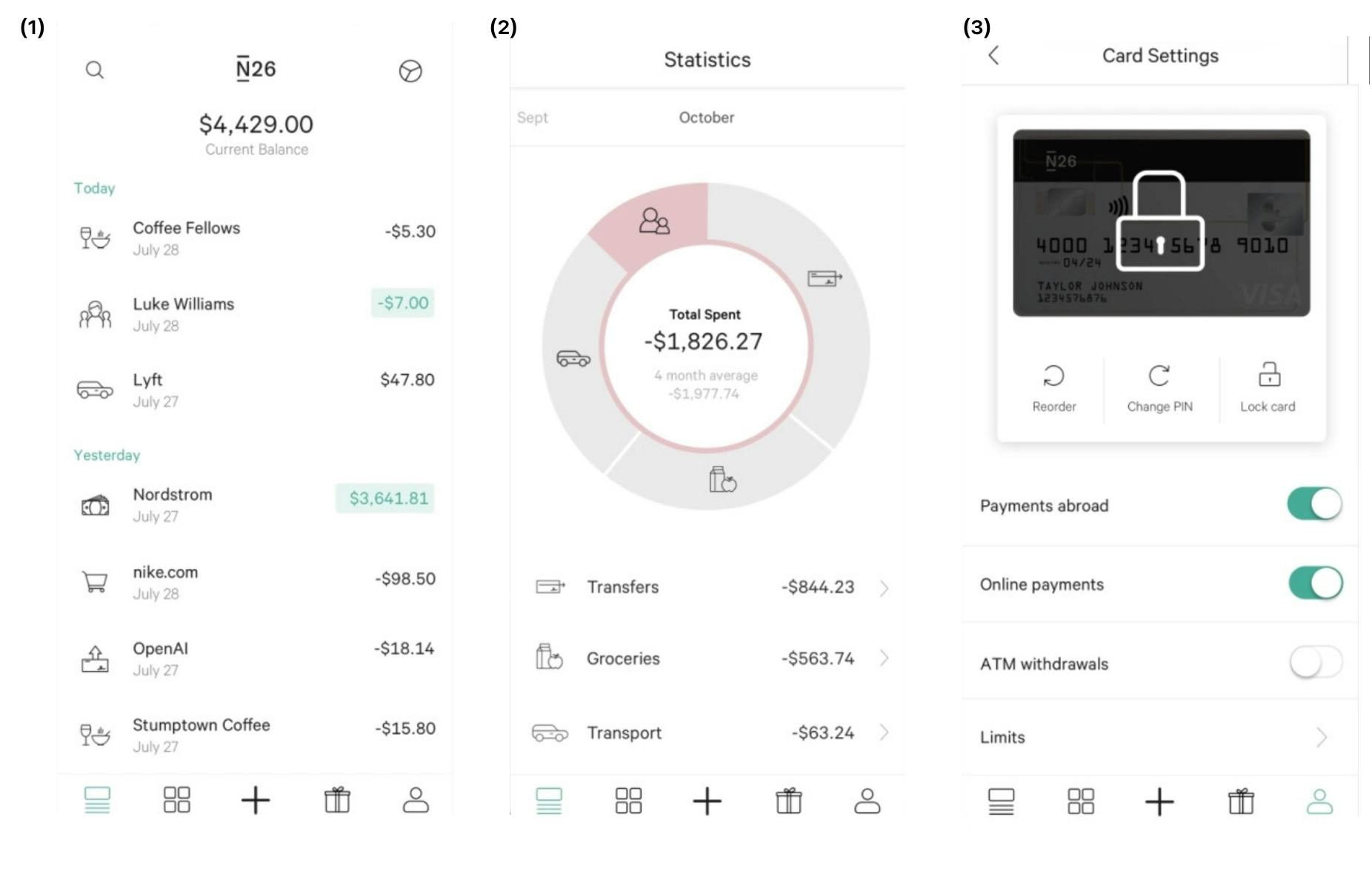
Like other early European neobanks, N26 launched in 2014 to bring a more consumer-friendly banking experience to market, with the ability to sign up for an account in five minutes instead of waiting days and making a physical visit to a bank.
Where N26 most clearly differentiated from other online bank competitors was in their focus on mobile app user experience—from instantly reflecting transactions in-app(1), to Mint-like spending overviews(2), to intuitive controls for functions like disabling ATM withdrawals or enabling international spending(3).
Because German banking licenses enable neobanks to operate in other markets inside the EU, N26 was able to launch in Germany, Austria and Switzerland from day 1 and quickly expand into other European countries.
Competition
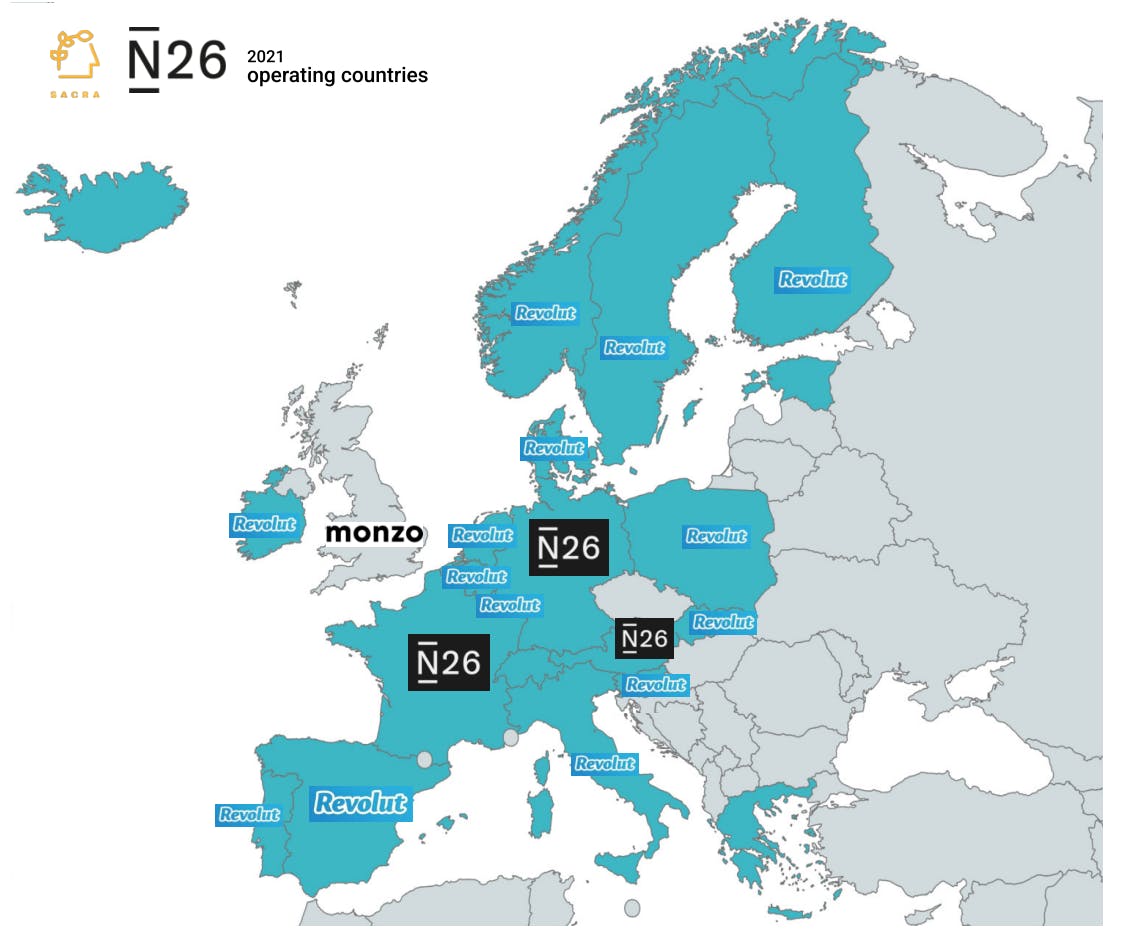
The #1 neobank across each European country
Across Europe, it’s becoming increasingly clear that while N26 has found powerful footholds in France and Germany, the neobank is #2 behind Revolut in most markets.
That’s not necessarily to say that European neobanking is a winner-take-all market. The market in the United States shows—with companies like Chime, Square, PayPal, SoFi and Robinhood all achieving $10B+ outcomes—that even #2 has the potential to be a large outcome.
For now, N26 has existing plans to expand further in Eastern and Central Europe, where existing mobile banking options are weaker and European competitors like Revolut are not as well established. They are also planning a move to launch in South America.
Prior expansions to the United States and United Kingdom were less successful, and N26 pulled out of both of those markets in 2021.
TAM expansion
Comparing ARPU per monthly active user across various financial services around the world illustrates the upside case for both Revolut and N26. Russian neobank (and the world’s largest digital bank by number of customers) Tinkoff driving $278 per user and JPM Chase driving $2,576 per user— 78x what N26 is able to generate from each one of its users today.
While their ARPU is low relative to these larger financial services companies today, the flip side is that N26 potentially has more room to grow if they can continue to layer on new features like crypto, retail trading, and as they continue to make financial services more efficient and user-friendly and win market share across Europe and the world—from existing bank giants like HSBC, Barclays, Deutsche Bank and Santander as well as from other neobanking startups.
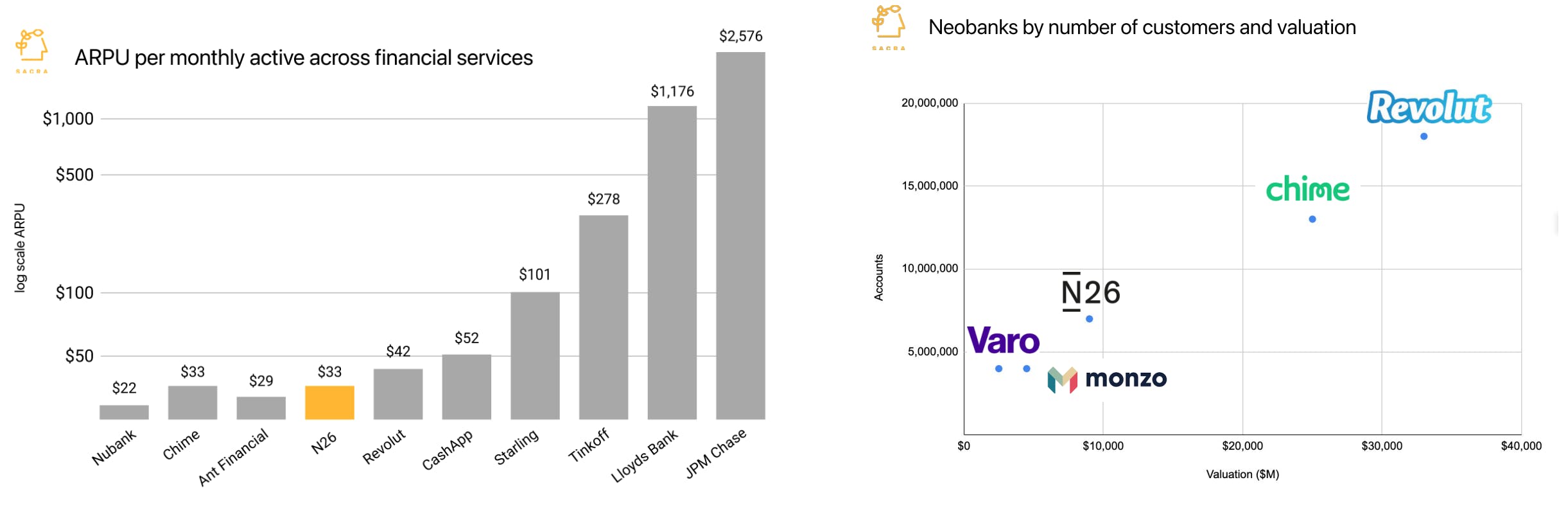
Risks
The COVID-19 pandemic was not a powerful tailwind for N26 as it was for some software and fintech companies (see below). While online banking grew with lockdowns and physical bank closures, key neobank use cases like remittances and international spending (due to travel restrictions) slowed down, while use cases like retail trading and lending (where N26 has not built out its own capabilities) accelerated. Incumbent banks have moved to compete against digital-first neobanks as well, with various app launches from Marcus (Goldman Sachs) and Mettle (Natwest) to Fyrst (Deutsche Bank) and Openbank (Santander). These products come with strong pre-built customer trust, larger warchests of money to spend on further customer acquisition, and less exposure to challenges in the fundraising environment.
User-friendly design and low pricing—as well as things like overdraft protection—used to be sufficient for neobanks to differentiate from incumbent banks, but these value propositions are quickly being emulated by new startup neobanks that differentiate by targeting specific customer groups and use cases. Providing value-add services for specific groups of customers may be critical for neobanks to win in an increasingly crowded market.
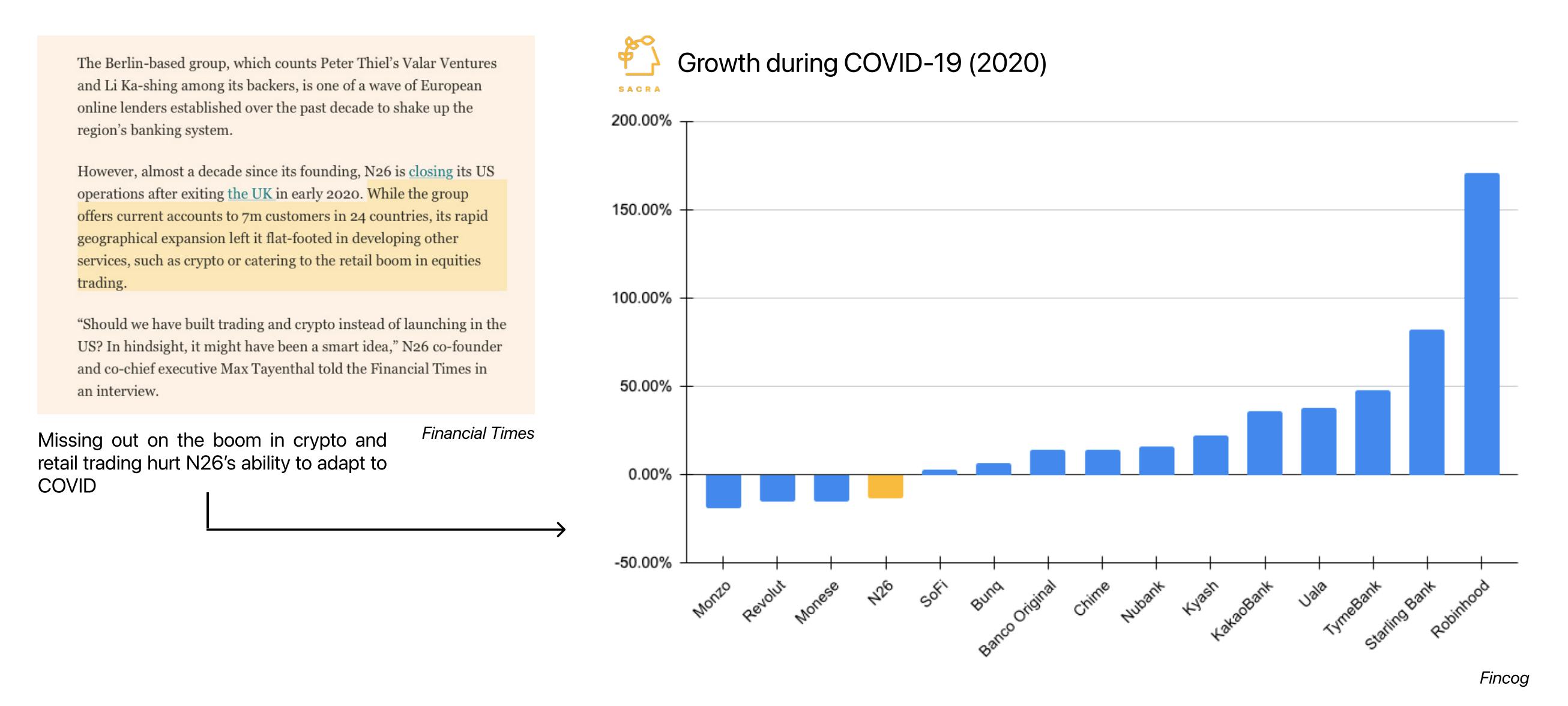
App metrics
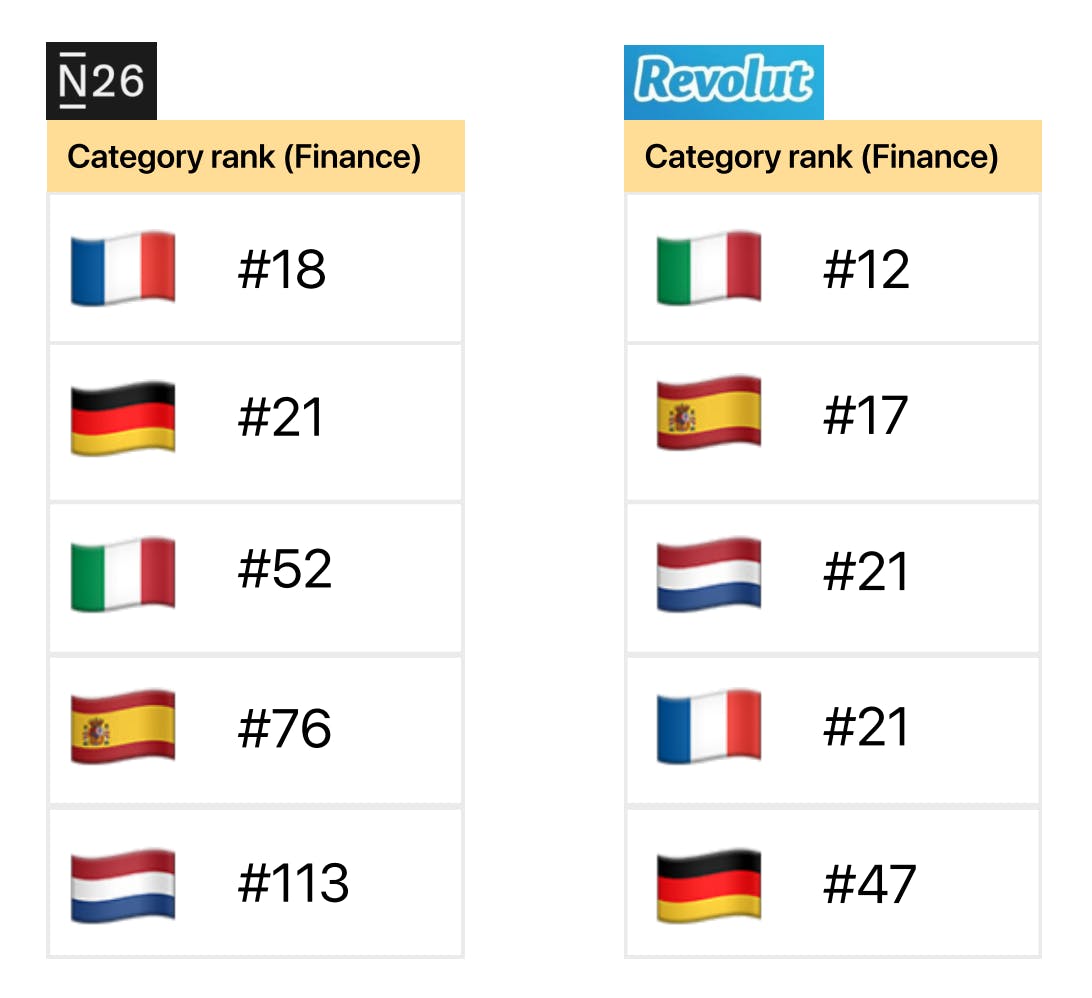
Fundraising
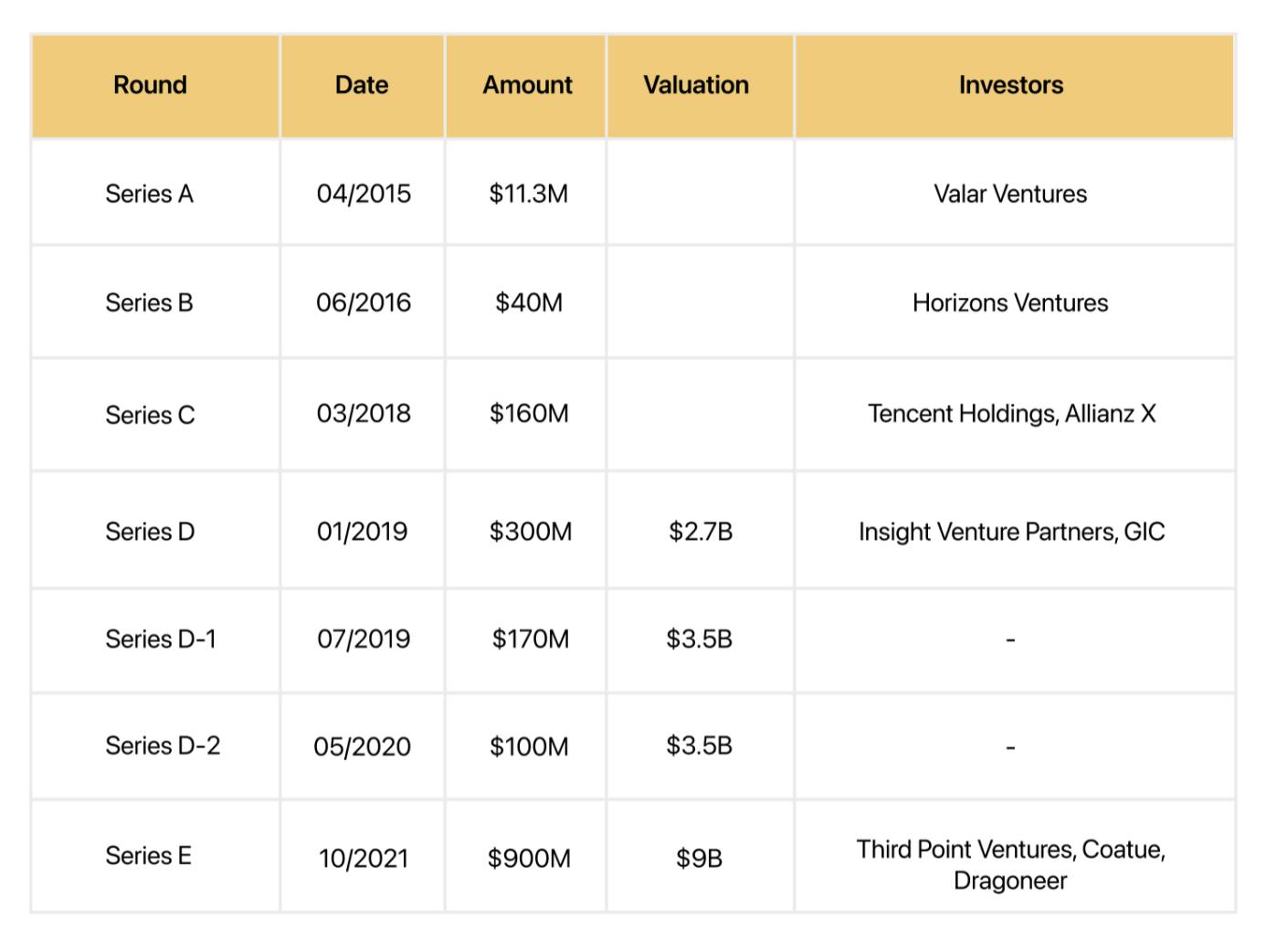
Exit scenarios
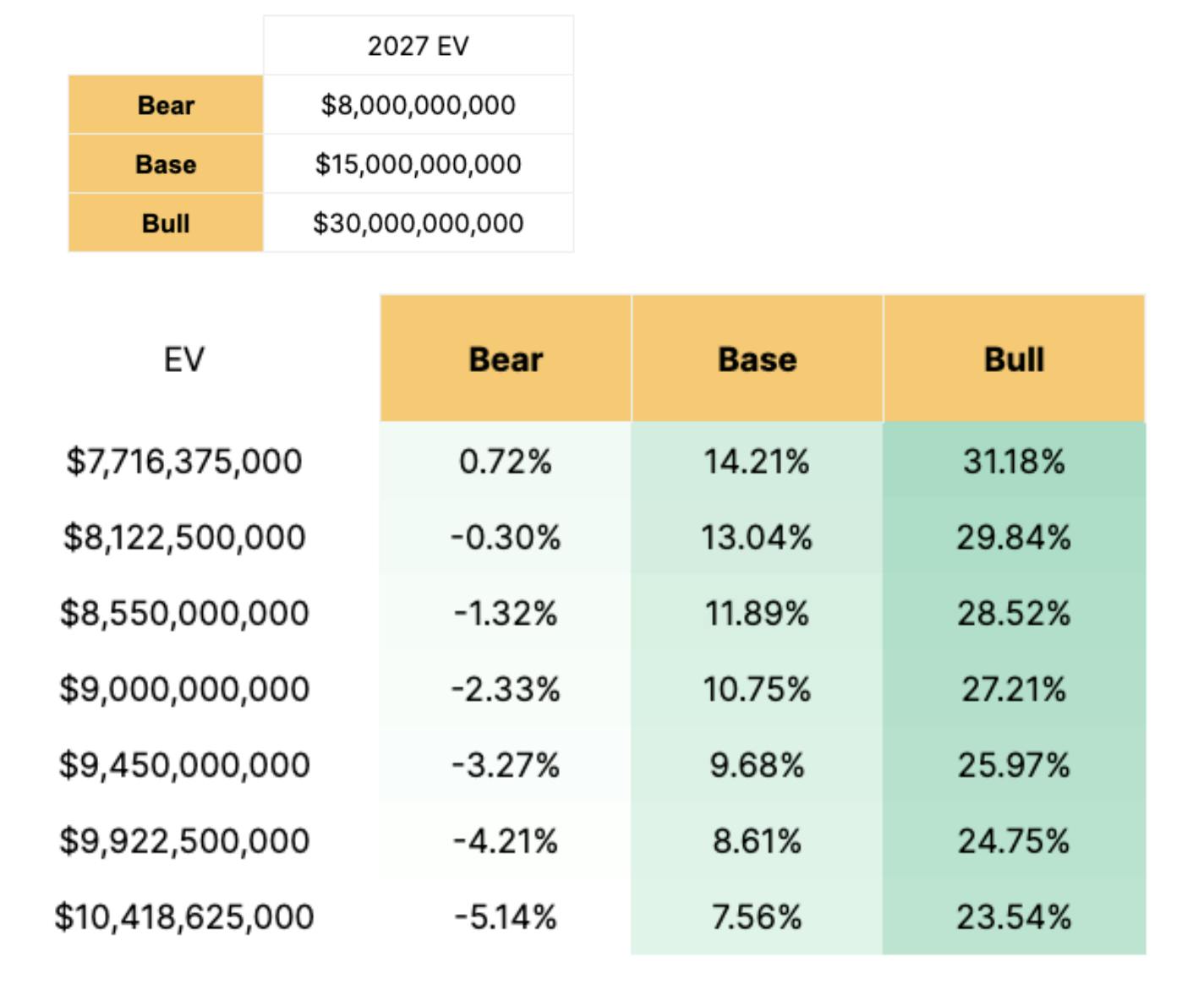
IRR calculator for illustrative purposes.
Comps
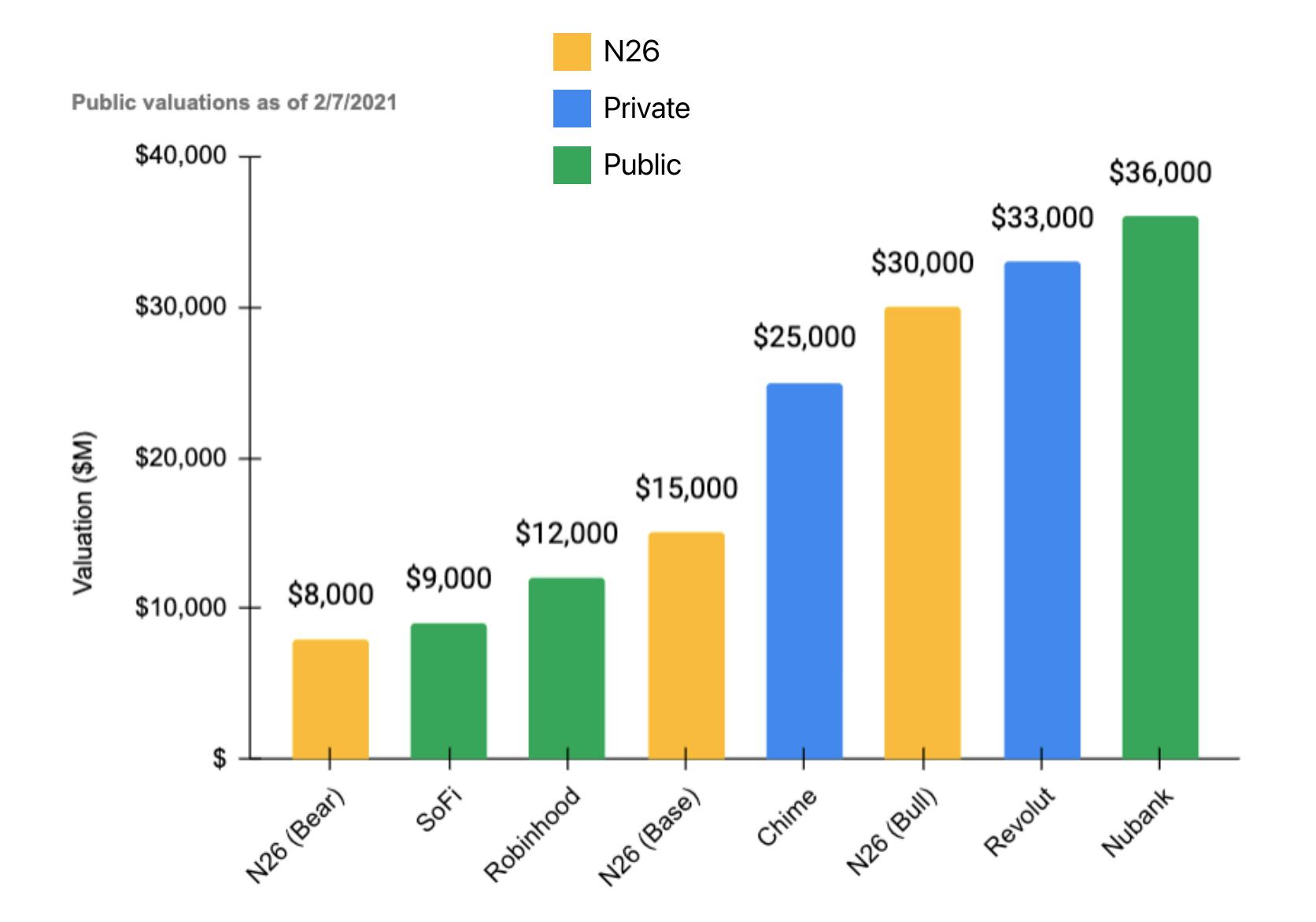
IPOs
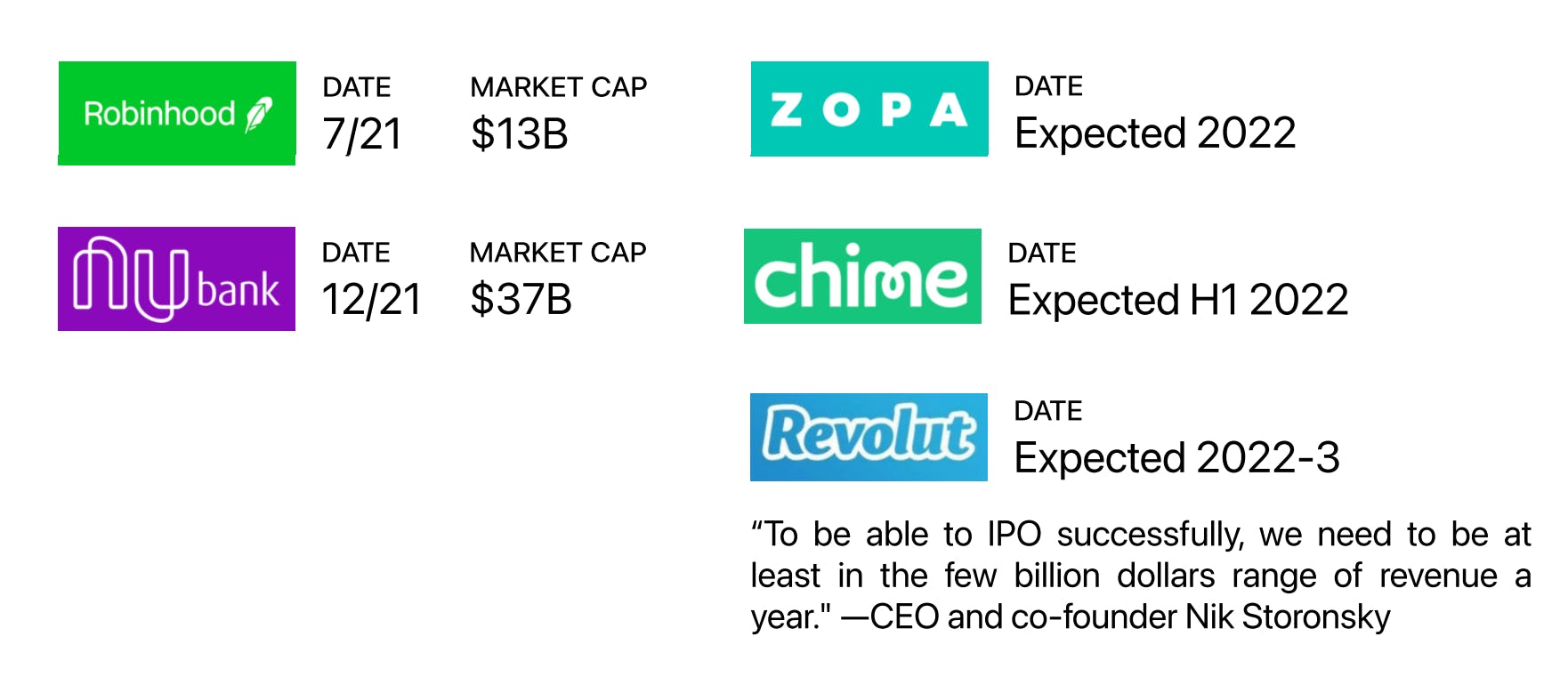








DISCLAIMERS
This report is for information purposes only and is not to be used or considered as an offer or the solicitation of an offer to sell or to buy or subscribe for securities or other financial instruments. Nothing in this report constitutes investment, legal, accounting or tax advice or a representation that any investment or strategy is suitable or appropriate to your individual circumstances or otherwise constitutes a personal trade recommendation to you.
This research report has been prepared solely by Sacra and should not be considered a product of any person or entity that makes such report available, if any.
Information and opinions presented in the sections of the report were obtained or derived from sources Sacra believes are reliable, but Sacra makes no representation as to their accuracy or completeness. Past performance should not be taken as an indication or guarantee of future performance, and no representation or warranty, express or implied, is made regarding future performance. Information, opinions and estimates contained in this report reflect a determination at its original date of publication by Sacra and are subject to change without notice.
Sacra accepts no liability for loss arising from the use of the material presented in this report, except that this exclusion of liability does not apply to the extent that liability arises under specific statutes or regulations applicable to Sacra. Sacra may have issued, and may in the future issue, other reports that are inconsistent with, and reach different conclusions from, the information presented in this report. Those reports reflect different assumptions, views and analytical methods of the analysts who prepared them and Sacra is under no obligation to ensure that such other reports are brought to the attention of any recipient of this report.
All rights reserved. All material presented in this report, unless specifically indicated otherwise is under copyright to Sacra. Sacra reserves any and all intellectual property rights in the report. All trademarks, service marks and logos used in this report are trademarks or service marks or registered trademarks or service marks of Sacra. Any modification, copying, displaying, distributing, transmitting, publishing, licensing, creating derivative works from, or selling any report is strictly prohibited. None of the material, nor its content, nor any copy of it, may be altered in any way, transmitted to, copied or distributed to any other party, without the prior express written permission of Sacra. Any unauthorized duplication, redistribution or disclosure of this report will result in prosecution.
